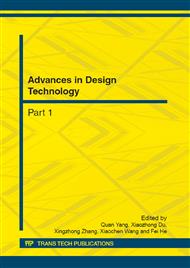p.59
p.64
p.70
p.74
p.78
p.82
p.89
p.95
p.101
Finite Element Analysis and Optimizing Design of the Bus Body
Abstract:
To model one bus body based on shell element and put it into the finite element analysis ANSYS made the mechanics analysis Using Pro/e software. Exert bending, reverse load, etc and done the operation and calibration. Through to adjust body structure balanced each part stress of the body. Analyzed data and put forward reasonable improvement scheme for restarting the optimization design. Got the purpose of the Body quality being light with high strength, the material effective utilization rate dramatically been improved.
Info:
Periodical:
Pages:
78-81
Citation:
Online since:
November 2012
Authors:
Price:
Сopyright:
© 2012 Trans Tech Publications Ltd. All Rights Reserved
Share:
Citation:


